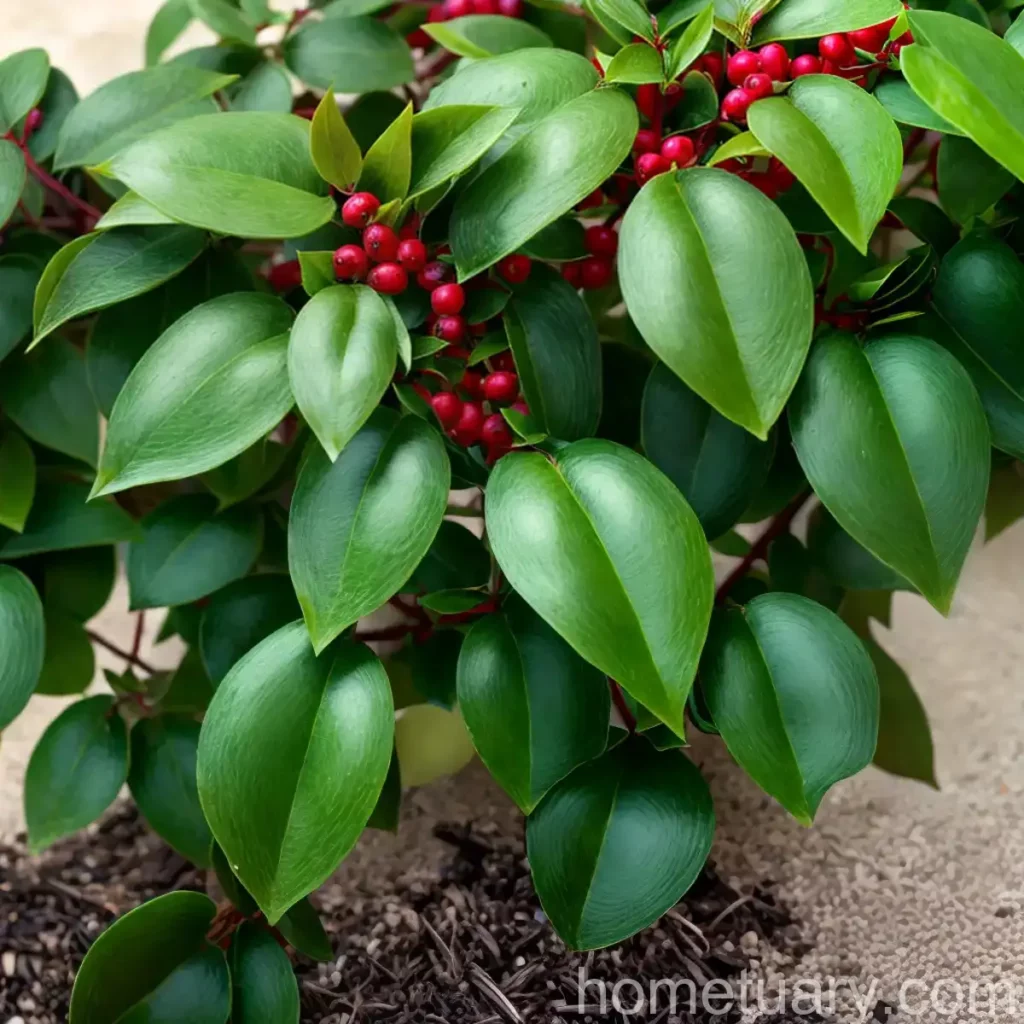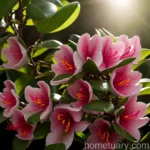Wintergreen (Gaultheria procumbens): A Fascinating Plant
Plants have been an integral part of human life for centuries, providing not only nourishment but also a myriad of other benefits. Among the diverse array of plant species, Gaultheria procumbens, commonly known as wintergreen, stands out for its unique characteristics and potential uses. In this comprehensive guide, we will delve into the various facets of this intriguing plant, covering its culture, uses, growth requirements, common diseases and pests, as well as propagation methods and maintenance tips.
What is Wintergreen (Gaultheria procumbens)?
Wintergreen, scientifically referred to as Gaultheria procumbens, is a perennial evergreen plant that belongs to the Ericaceae family. This low-growing, creeping shrub is native to the eastern regions of North America, typically found in forests and woodlands with acidic and well-drained soils. The plant is renowned for its distinct aromatic properties, with its leaves exuding a strong, minty fragrance when crushed. The small, bright red berries of the wintergreen plant add to its visual appeal, especially during the colder months.
Key Takeaways – Wintergreen (Gaultheria procumbens)
Before we delve into the specifics of wintergreen care and cultivation, let’s summarize the key takeaways related to this remarkable plant:
- Botanical Name: Gaultheria procumbens
- Common Name: Wintergreen
- Family: Ericaceae
- Native Habitat: Eastern regions of North America
- Distinctive Feature: Aromatic, minty fragrance
- Growth Type: Low-growing, creeping evergreen shrub
- Notable Attribute: Bright red berries
- Cultural Significance: Medicinal and ornamental uses
- Popularity: Increasing demand in herbal and ornamental gardening
Now that we have a brief overview of wintergreen, let’s further explore the culture, uses, and care requirements for this fascinating plant.
Culture
Water
Ensuring adequate moisture is crucial for the healthy growth of wintergreen plants. While they thrive in moist conditions, it’s important to maintain well-drained soil to prevent waterlogging, which can be detrimental to the plant’s health. During dry spells or periods of prolonged heat, regular watering is necessary, especially for plants in containers.
Sunlight
Wintergreen plants exhibit a preference for partial to full shade, especially in warmer climates. While they can tolerate some direct sunlight, providing dappled or filtered light is ideal for promoting vigorous growth and preserving the plant’s delicate foliage.
Fertilizer
When it comes to fertilization, wintergreen plants are relatively low-maintenance. A balanced, slow-release fertilizer applied in early spring can provide the necessary nutrients for healthy growth. However, it’s important to avoid over-fertilization, as this can lead to excessive foliage at the expense of flower and fruit production.
Soil
The soil requirements for wintergreen plants are quite specific, as they thrive in acidic, well-drained soils with a pH range of 4.5 to 6.0. It’s advisable to incorporate organic matter into the soil to enhance its moisture retention capabilities while maintaining good drainage. Additionally, mulching around the base of the plants can help conserve moisture and regulate soil temperature.
Pruning
Pruning is an essential aspect of wintergreen plant maintenance, helping to shape the plant, remove dead or diseased foliage, and promote airflow within the canopy. The best time to prune wintergreen is in early spring before new growth emerges. This allows the plant to recover and put forth vigorous growth during the growing season.
Propagation
Wintergreen plants can be propagated through several methods, including seed sowing, division, and softwood cuttings. Each approach has its advantages and is suited to different circumstances. For instance, seed sowing is ideal for large-scale propagation, while division and softwood cuttings are more suitable for obtaining genetically identical plants or for smaller-scale propagation efforts.
Container Popularity
The compact size and attractive foliage of wintergreen make it a popular choice for container gardening. Whether displayed on patios, balconies, or indoor settings, wintergreen plants add a touch of natural beauty and fragrance to the surroundings. When cultivating wintergreen in containers, it’s important to ensure adequate drainage and provide the right growing conditions, including suitable soil and light levels.
Common Diseases
Wintergreen plants are generally resilient to most common plant diseases when grown in favorable conditions. However, they may be susceptible to certain ailments, including:
- Leaf Spot: Fungal infections can cause dark spots to form on the leaves, potentially leading to defoliation if left unmanaged.
- Root Rot: Prolonged waterlogging or poorly-drained soil can create conditions conducive to root rot, which can compromise the plant’s health.
Disease Diagnosis
Identifying and diagnosing diseases affecting wintergreen plants is crucial for implementing effective control measures. Visual symptoms, such as leaf discoloration, spotting, wilting, or stunted growth, can provide valuable clues about the underlying issue. Additionally, conducting soil tests and inspecting the roots can help determine if the plant is experiencing root-related problems.
Common Pests
Although wintergreen plants are relatively pest-resistant, a few potential pests may occasionally present challenges to their cultivation:
- Spider Mites: These tiny arachnids can inflict damage by sucking the sap from the plant, leading to stippling and discoloration of the foliage.
- Winter Moth Caterpillars: The larvae of winter moths can feed on the leaves of wintergreen plants, potentially causing defoliation if present in large numbers.
Botanist’s Tips
For optimal growth and performance, consider the following tips when cultivating wintergreen plants:
- Acidic Soil: Ensure the soil pH remains within the optimal range to support the plant’s nutrient uptake and overall health.
- Moisture Control: Monitor soil moisture levels, especially during dry periods, to prevent water stress or waterlogging.
- Pruning Techniques: Employ proper pruning practices to maintain the plant’s form, remove dead or diseased foliage, and stimulate new growth.
- Container Gardening: If growing wintergreen in containers, select pots with adequate drainage and provide suitable growing conditions for the best results.
Fun Facts
Uncover the intriguing characteristics and historical significance of wintergreen through these captivating fun facts:
- The distinct wintergreen flavor is attributed to the presence of methyl salicylate in the leaves and berries of the plant, which imparts the characteristic minty taste and aroma.
- Indigenous tribes in North America traditionally utilized wintergreen for various medicinal purposes, such as treating respiratory ailments, sore muscles, and as a flavoring agent.
- The aromatic properties of wintergreen have led to its inclusion in various products, including chewing gum, candies, and oral care items, to impart its refreshing flavor.
Beyond its ornamental value, wintergreen has woven a rich tapestry of cultural, medicinal, and culinary significance, embodying a plant deeply intertwined with human history and traditions. Its unique attributes continue to pique the interest of botanists, herbalists, and gardening enthusiasts around the world.
Links to External Resources
Explore the diverse facets of wintergreen and deepen your understanding of this fascinating plant through the following external resources:
- Gaultheria Procumbens (Wintergreen) – Missouri Botanical Garden
- Wintergreen (Gaultheria procumbens) – University of Florida IFAS Extension
- Gaultheria procumbens – North Carolina State University Extension Gardener Plant Toolbox
These resources offer a wealth of information, insights, and practical guidance for cultivating, utilizing, and appreciating wintergreen in diverse settings, from home gardens to natural landscapes.
In summary, Gaultheria procumbens or wintergreen is a captivating plant with a rich tapestry of uses, cultural significance, and botanical allure. Whether cherished for its distinctive fragrance, medicinal properties, or ornamental appeal, wintergreen continues to captivate the hearts and minds of plant enthusiasts, underscoring its enduring relevance in the realm of horticulture and beyond.















